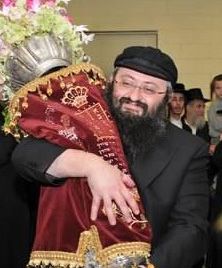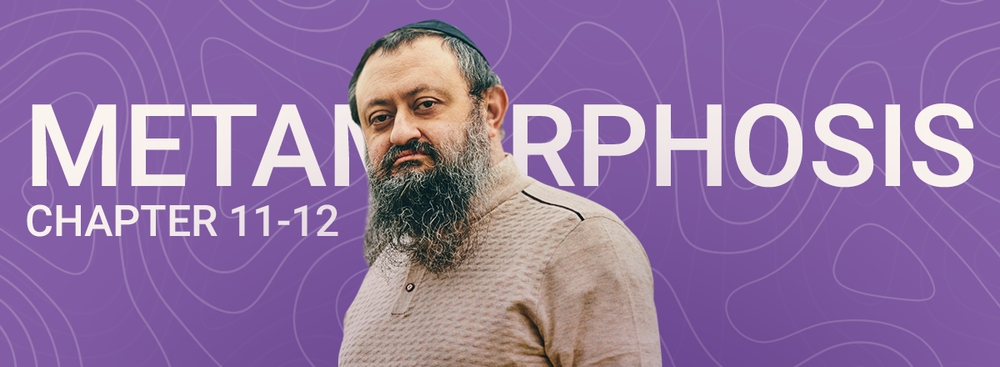In 2018, Dr. Vladimir Zelenko published an autobiographical book Metamorphosis, in which he talks about how he, being a completely non-religious young man, came to faith, and how he overcame a serious illness. The book has multiple positive reviews online and was well received by the readers all around the world.
Today, we are publishing the eleventh and the twelfth chapters of the book.
§11
MEDICAL RESIDENCY
We moved to Cedarhurst, Long Island and a few weeks later (July 2001), I started my residency program at South Nassau. Residency is a transitional period that takes a newly graduated doctor with no clinical experience and transforms him into a competent and independent provider. It involves very long hours of work, overnight calls, and experiences with life and death.
For most doctors, residency represents their first direct exposure with intense human suffering and death. I had to learn how to break devastating news to patients, i.e., “I am really sorry to tell you that you have cancer.” We had to manage cardiac arrests and attempt to resuscitate patients. Frequently, the patient would die, and the resident had to inform the patient’s family of the bad news and then manage the emotional fallout.
During my first overnight call in residency, I was paged to evaluate a patient who was having an active heart attack. Simultaneously, I was also called to take care of a patient who had fallen and hit the back of his head, which caused bleeding inside his brain. Fortunately, both patients lived. I felt as if I had been pushed into the deep end of a swimming pool and told to learn how to swim.
I found residency to be a maturing experience. It provided me with an opportunity to witness the full spectrum of the cycle of life, from treating newborns to providing end-of-life care and everything in between. The hours were long and exhausting by design. The rationale was that it takes time to assess a patient, order tests, wait for results, initiate treatment, reassess patient progress, and then make clinical changes if needed. I was always tired and had little energy for life outside of residency.
Toward the end of the first year of residency, my wife and I were expecting the birth of our first child. When my wife was in her third trimester, my mother got sick. One Shabbos, the phone rang, and I saw on caller ID that it was my parents’ home number. My parents knew already that they should not call me on Shabbos unless it was a true emergency. I picked up the phone and my father said that my mother was in extreme abdominal pain and that he was taking her to Coney Island Hospital. I drove to the hospital to meet them.
When I arrived, my mother was in the middle of getting a CAT scan. I went into the radiology control room and waited for the images to appear on the screen. When the test was complete, the images appeared, and she had a very large tumor in her colon. The tumor was obstructing the lumen of the colon and causing bowel obstruction. She needed emergency surgery. My mother had bowel resection surgery to remove the large tumor: a piece of the colon containing the cancer was cut out and the two remaining ends were put together all in one surgery. Several days later, my mother was discharged home. The next evening, my mother called me, saying that she had a small swelling at the surgery site and did not feel well. I arranged for my mother to have an appointment with Dr. Sandowski the next morning. The next morning, while being examined, my mother developed a fistula[1] at the surgical site. She had peritonitis[2] and required immediate surgery.
My mother was transferred to the emergency room at South Nassau and immediately taken to the operating room. The surgery lasted over ten hours. The surgeon came out to speak to my father and me and told us that this is a good time to pray. He had done everything he could, and it was now in G-d’s hands. In the next few weeks, my mother required several more surgeries to clean up residual abscesses that had formed.
During this time, my first son was born. I performed his circumcision myself and we named him Levi Yitzchok, after the father of the Lubavitcher Rebbe and my paternal grandfather. I was working over seventy hours a week currently in residency and was struggling to keep everything together. I spoke to Dr. Sandowski and told him that I was having trouble focusing on work.
He suggested that I take a few weeks off to take care of my family. I was confused about why G-d had superimposed the birth of my first child with the life-threatening illness of my mother. It did not seem fair.
Before my mother had gotten sick, she was a highly successful computer analyst for Morgan Stanley. My mother made a good living and she was highly respected. Now, she had colon cancer, underwent multiple surgeries, and would need chemotherapy. To me it seemed that she had lost her will to live and was wasting away. When my newborn son was discharged from the hospital on the second day of his life, we took him to visit my mother at her hospital. This was my parents’ first grandchild. What happened next was a miracle. I brought my son into her room and put him in her arms for the first time. At that moment, I saw her will to live return into her soul.
From that moment, she began the process of healing and recovery. Six weeks after leaving the hospital, my mother started chemotherapy. After six months of successful treatment, she underwent another corrective surgery. In retrospect, I understood G-d’s wisdom regarding the timing of my son’s birth. He came into the world at the precise moment that we all needed him. There is a well-known Jewish teaching that states, “When a son is born the entire family is healed.”
I frequently worked on Sundays. Sundays in the hospital were relatively quiet in comparison to weekdays. I used to go to the receptionist and get a list of Jewish patients. I would go to visit these patients wearing my surgical scrubs, offering to put tefillin on the men. I had a joke that I would use, that “I am here to check your Jewish blood pressure.” Most people were very receptive. On one occasion, I met an elderly patient who agreed to put on tefillin. I helped him, and we said the Shema together. One hour or so later, my code beeper went off. This usually meant that there was a cardiac arrest. One of my responsibilities as a house officer on call was to run the codes. I arrived at the patient’s room and attempted to resuscitate the patient. Unfortunately, he passed away. This patient was the one that I had put tefillin on and prayed with one hour before.
The second year of residency was an important time for me. My professional competency grew significantly, and I began to feel that I could practice high-level medicine independently and without supervision. During my third and final year, my beautiful daughter Esther Tova was born. I also started to look for employment for after graduation. I was contacted by a professional recruiter and told about an opportunity at Ezras Choilim Health Center. It was in the village of Kiryas Joel in the town of Monroe, New York. I had never heard of this community but was excited about this opportunity. I was concerned that after graduation I would not be able to find employment that would accommodate the laws of Shabbos and Yom Tov. I wanted to find work that could integrate my spiritual and material needs. Practicing medicine in a Chassidic community seemed like the perfect answer.
§12
KIRYAS JOEL
I arrived in Kiryas Joel for an interview in March of 2004. My first impression of the village was very positive. It seemed to be a modest and genuinely religious community with many kids. Most residents of the village were Satmar Chassidim. The village had its own infrastructure, including Hatzolah[1] public safety, fire department, health center, etc.
It also had its own kosher supermarkets, butcher shop, pizza, and many other various stores. In addition, Kiryas Joel was filled with multiple shuls, mikvaot, a matzah bakery, and other Jewish infrastructure. It was a self-contained Chassidic village in a mostly non-Jewish part of Orange County, New York.
My interview at Ezras Choilim Health Center went well and I was offered a position for after I would graduate from residency. It seemed that G-d had answered my prayers by giving me an opportunity to practice medicine in a community that lived according to Jewish law.
Hatzolah (lit., “rescue”): Name of a network of Orthodox-Jewish-run volunteer ambulance squads in various Orthodox communities worldwide, staffed by highly trained Orthodox EMTs and drivers. ↩︎
I felt that I could integrate my professional, material, and spiritual needs by working in this Chassidic island in the middle of nowhere.
We moved to Monroe, New York in June of 2004 to start my professional career as a real doctor. I was scared and excited at the same time: scared because I was now independent and fully responsible for patient care; and excited for the exact same reason. My training wheels were removed, and I was free to practice medicine in the way I saw fit.
On my first day of work, a patient came to me regarding a fishbone. A few years before my arrival there was a woman who, sadly, passed away from a bone that was stuck in her throat. Since then, the community has been very nervous and hypervigilant about fish bones. Therefore, the patient told me the following story. Two days before, she was eating, and a fishbone was stuck in her throat. She went to the emergency room to be examined. The x-ray was normal, and the doctor did not see anything on the exam. The patient was instructed to follow up with an ENT doctor. The next day, she called the ENT doctor and she was given an appointment for the following week. She still felt the fishbone in her throat and was very anxious. Therefore, she went to a different emergency room. Again, the x-ray and examination were normal, and she was instructed to follow up with an ENT. The next day, she came to see me. I listened to her story and was skeptical that I could help her since I was not an ENT and did not have the correct equipment. She asked me to please try to help her. I looked into her throat and saw a fishbone stuck in her tonsil. I took tweezers and removed it. It took about an hour for this story to spread through the community and I was a hero.
I learned a few things from this patient encounter. Firstly, information spreads in Kiryas Joel faster than light. Secondly, regardless of what other doctors have done, I should not be lazy to recheck everything myself.
Lastly, G-d can make you famous using a fishbone. I honestly did not understand why so many people congratulated me on my brilliant work.
Moses Witriol, my next-door neighbor and head of the village’s public safety, invited me to a barbeque the following Sunday. Little did I know that my life was about to change. During the barbeque, I met Moshe Aron Steinberg, the founder and head of Kiryas Joel Hatzolah. The next thing I knew, I was hijacked by Witriol and Steinberg and found myself in an ambulance heading to the Catskills. Apparently, a thirteen- year-old boy with a heart condition was in the emergency room of Harris Hospital in Liberty, New York. He needed to be transferred via ambulance to Columbia Presbyterian Hospital in Manhattan. To release the patient, Harris Hospital required that a medical doctor be present during and take responsibility for the transfer to Columbia. I was drafted for the task without being asked. The patient did well during the transport and I became unit number KY-76 of Kiryas Joel Hatzolah.
One day, while looking out of my window at home, I saw several Hatzolah vehicles drive by very quickly with their lights and sirens blasting. They were obviously responding to some type of emergency. I followed them with my car and arrived at a neighbor’s house several blocks away. When I entered the house, I saw our paramedic and EMTs trying to save the life of an eight-year-old child. The child had swallowed a small padlock and was barely breathing. While we held the child down, the medic inserted an instrument to try to remove the lock. It did not look good and I thought that we were going to lose the child. The mother was in the corner crying and praying. Then with G-d’s help, the medic was able to grasp the loop of the lock and remove it. The child started to breathe more normally. The boy was taken to the hospital and he did very well. The next day he was discharged from the hospital and I came to his house to visit him. I brought a toy truck with no small pieces.
I was once invited to a thirtieth birthday party for Rabbi Pesach Burston, the Chabad-Lubavitch shliach in Orange County, New York. I was on his front porch talking to a friend. Suddenly, there was yelling and commotion from inside the house. When I entered, I saw an older woman—weighing around 250 pounds—choking, and a 150-pound man trying to perform the Heimlich maneuver, unsuccessfully. Everyone looked at me to do something since I was a doctor. I got behind her, wrapped my arms right below her diaphragm, and attempted the Heimlich maneuver. Nothing happened, so I repeated the procedure several times. Still, nothing happened, and I started to feel the woman losing strength and about to lose consciousness. I yelled for a knife and a pen with a hollow tube so that I could perform an emergency cricothyrotomy. This procedure cuts a hole through a membrane in the patient’s neck into the windpipe to allow air into the lungs. As I was waiting for the knife and pen, I decided to perform the Heimlich maneuver one last time. As I lifted the patient off the ground, a piece of chicken shot out of her mouth and hit the adjacent wall. The woman began to breathe normally and did very well.
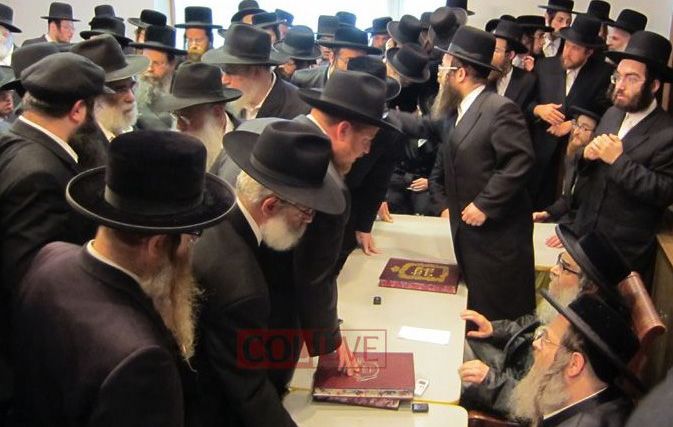
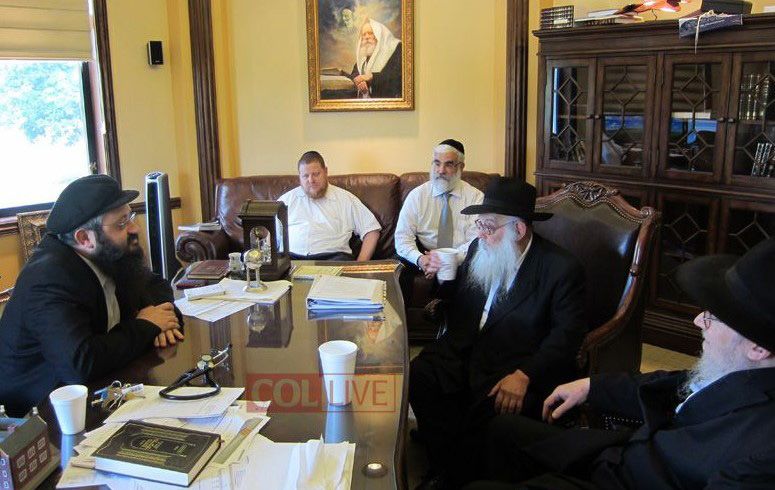
Rabbi Burston and I have shared some interesting experiences. In July 2010, the Satmar Rebbetzin, Pessel Leah Teitelbaum, passed away. As is customary, many people came to her son, Rabbi Aron Teitelbaum, to pay their respects (menachem avel). A high-ranking delegation was sent from Crown Heights to visit the Satmar Rebbe. Rabbi Burston and I were involved. On another occasion, while working in my office, I was called by Hatzolah and asked to help inside an ambulance. The ambulance picked me up on the way to the hospital.
What I saw then changed me forever. A four-year-old girl had just been hit by a truck while playing and had a crushed skull. The child was not breathing, and she was being manually ventilated. I could see her brain matter through the crushed skull. Sadly, she died on the way to the hospital. The parents of the child were following the ambulance in their car. When we arrived at the hospital, I informed them that their beautiful daughter had died.
I had two children at that time: Yitzy, my three-year-old son, and Esther, my one-year-old daughter. When I came home that night and saw them sleeping, I had an emotional breakdown. For the next few months, I would call home multiple times a day to make sure that they were okay. I could not stop my obsessive worrying and compulsion to check up on them. I realized that I had a problem and needed help. I spoke to a wise and trusted friend who shared with me a teaching from an ancient Jewish book called Duties of the Heart[1] The book simply explained that the Creator of the universe loves my children more than I love my children. Amazingly, meditating on this concept freed me from my obsessive thoughts.
After some soulsearching, I concluded that the essence of my problem was a defect in faith. It was foolish of me to worry about things that I cannot control. My obligation as a parent is to create as safe an environment as possible for my children. The rest is in G-d’s hands.
I really enjoyed being a member of Hatzolah. In addition to making good friends, I was also impressed by the volunteers’ attitude and self-sacrifice. The organization was led by Mr. Steinberg, who had an unusual and out-of-the-box approach to patient care. I heard him frequently say, “It’s much better for the patient to be illegally alive than to be legally dead.” His concept was simple: treat every patient like family, do not be lazy, and advocate for the best care possible, even if it meant driving the patient extremely long distances. In other words, the patient was not abandoned in the emergency room of some local low-rate hospital but, rather, would be taken to the best place possible. We would even drive to the Harvard hospitals in Boston or the Cleveland Clinic in Ohio. In addition, we would contact the best doctors and make sure that the patient was seen timely. We would also follow up to make sure that the patient was getting better.
This approach to patient care really appealed to me and I started to integrate these concepts into my private practice. Patients find the medical system very confusing and indifferent to them. It is the doctor’s responsibility to help the patient navigate the system.
Chovot Halevavot (Duties of the Heart): Main work of the 11th-century Spanish philosopher and rabbi, Bachya ibn Pakuda. ↩︎
For example, if a patient needs an MRI, they may get an appointment in a week or so. Instead, if my office calls, the patient usually gets the test and the results on the same day. This leads to more timely diagnosis and a decrease in anxiety.
During my practice of medicine in Kiryas Joel, I was privileged to witness frequent Divine providence. There were many instances in which patients’ lives were saved through my involvement but it had very little to do with my skill as a doctor. I would like to share with you some of these interesting events. I have changed some minor details to protect the privacy of my patients.
One time a patient came to me with low back pain. After examining the patient, I ordered an MRI of his lumbar spine (lower back). I wrote the prescription as MRI L-S (lum-bar-sacral) spine. The patient went to the radiology place to schedule the test. The secretary misread the prescription and ordered an MRI of his cervical spine (neck). She misread the L as a C. Keep in mind that the patient had low back pain, not neck pain. The patient had an MRI of his neck instead of the low back. The results came back saying that he had a dangerous herniated disc in his neck that could lead to paralysis. The next day, he had emergency surgery to fix the problem in his neck, which resolved his low back pain.
On another occasion, a patient with LEFT-sided abdominal pain came to me. I examined the patient and ordered a CAT scan of his abdomen and pelvis. The next day the patient called and told me that his abdominal pain had completely resolved, and he wanted to know if he should still have the test. I said, “Yeah, why not?” The patient went for the test and a large RIGHT kidney cancer was discovered. The patient had surgery two weeks later and did extremely well. His initial complaint had nothing to do with his subsequent diagnosis except for the fact that it led to timely discovery.
Another time, I was talking to my secretary by the front desk of my office. An older woman approached the front desk. When she saw me, she got my attention with a very loud voice and said,“Dr. Zelenko, my daughter just had a baby and she has a terrible headache. Can you prescribe her a painkiller?”
I was irritated by the naive request and said to her, “Maybe she has meningitis?” Keep in mind that in my career I had never seen a patient with meningitis. I told the mother to bring her daughter to the office and I would see her right away. The patient came to my office and when I entered the exam room, she was lying down with her eyes closed and lights off. When I asked her some questions, the noise of my voice caused her severe headache pain. When I examined her, she had a very stiff neck and refused to move her head. I sent her right away to the hospital and she was diagnosed with serious meningitis. She spent three weeks in the intensive care unit and had a complete recovery, thank G-d.
One day, I walked into an examination room to see a young single woman deeply praying. She was there with her mother.
I asked what was going on. The mother told me that her daughter is a kallah (bride) and that she was getting married in six hours. Therefore, I asked, “Why are you HERE?” The mother told me that her daughter had some belly pain earlier this morning. She was sure it was just nerves, but she wanted to make sure that everything was okay. I examined the patient and did a quick blood test to check for infection. The results were concerning, and I advised the patient that she needed a CAT scan right away.
They were not expecting this and were shocked. I convinced them of the importance of the test and assured them that I would expedite the process as quickly as I could. I had my staff call the insurance company and get immediate approval for the imaging test. I then called the radiology office and explained to them that I needed an immediate appointment for a bride on her wedding day. They told the patient to come over right away. She had a CAT scan and the results showed appendicitis, which is a surgical emergency.
The patient and her mother came back to my office and I gave them the results. I told them that they needed to go immediately to the hospital via ambulance and that she would need an operation. This was a shocking development for everyone involved. They asked me if they could have the chuppah (marriage ceremony) first and then go to the hospital. I said, “Absolutely not.” They told me that they needed to consult with their rebbe first before they made any decisions. They went to see Rabbi Aron Teitelbaum, the Grand Rabbi of Satmar. He told them, “A wedding we could reschedule, but a life we cannot replace.”
The mother called me and said that they agreed to go to the hospital. I called Dr. Leon Pachter, the chief of surgery at NYU medical center. Dr. Pachter, who is an observant Jew, agreed to see the kallah himself. He was waiting in the emergency room when the patient arrived. The staff must have thought that the President of the United States must be coming in because Dr. Pachter was waiting by himself for the patient. As the patient was being prepared for surgery, the guests began to arrive at the wedding hall for the wedding ceremony. This was an international wedding with guests who had come from England, Belgium, Canada, and Israel. No one knew what was going on initially, until the family made an announcement. Fortunately, the surgery went well, and the bride was discharged home the next day. The following day, she got married.
I have frequently collaborated with leading rabbinic figures such as Rabbi Aron Teitelbaum. This is simply because many of my patients would seek advice from their spiritual leaders prior to making important decisions regarding their medical care. I have become personally very close with Rabbi Teitelbaum and his rebbetzin[1]
rebbetzin: The wife of a rabbi. ↩︎
I occasionally seek their counsel regarding personal and professional matters. On a more whimsical note, I came to the Satmar Rebbe’s house on the holiday of Purim several years ago. I had borrowed “Rebbish” clothing from one of my patients. I was dressed in a shtreimel (fur round hat), a tilep (a furovercoat), a silver cane, custom-made Chassidic glasses, and the traditional white socks. I also came with my gabbai (personal secretary), Yoel Wagschal; and my house bucher (personal servant) Elimelech Wagschal. We all went into Rabbi Aron Teitelbaum’s private study and I was introduced as the Meditziner Rebbe (the medical Rebbe). When Rabbi Aron Teitelbaum saw me, he immediately recognized me and said in Yiddish, “Bleyept azoy,” which means, “Remain like this.”
Another important rabbinic figure I had met during practicing medicine is Rabbi Yisroel Avroham Portugal, also known as the Skulener Rebbe. A few years ago, Rabbi Hershel Ausch, who is a famous dien (rabbinic judge) in Williamsburg, called and asked me to see the Skulener Rebbe as a patient. It was 12 a.m. and the Rebbe was more than one hour away from me, in the Catskills. I got out of bed, woke up my Yitzy, who was eight years old at the time, and drove upstate to see the Rebbe. The reason I took my son Yitzy was that I wanted him to see and receive a brachah (blessing) from a truly righteous man.
We arrived at the Rebbe’s house at 2 a.m. His waiting room was filled with people seeking an audience and a blessing. We were taken into the Rebbe’s private room right away. The Skulener Rebbe was in his late eighties and very frail. I examined the Rebbe, made a diagnosis, and ordered the appropriate tests and medicine. I then asked the Rebbe to please give my son a brachah. What happened next truly touched my heart. The Rebbe got up, asked for help putting on his bekishe (black silk coat), and slowly walked over to the sink to wash his hands in the ritual manner.
He then put on his gartel (a belt used during prayer), and hat. He slowly walked back to his chair and gestured that my son be brought to him. This process, up to this point, must have taken more than ten minutes. He put his holy hands on my son’s head and blessed him with closed eyes and deep concentration. This payment was priceless to me.
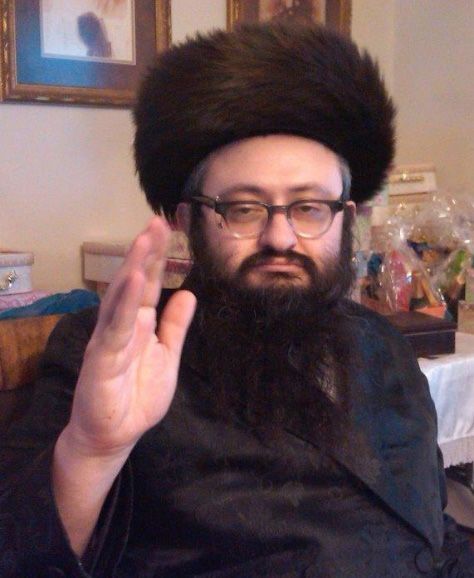
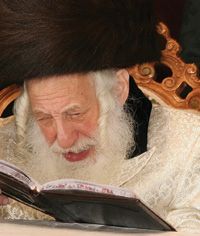
Several years ago, I was speaking to Moshe Aron Steinberg. He did not sound like himself. I asked him, “What’s wrong?” He said that everything was fine. I asked him again what was wrong with him, in a more forceful voice, and he admitted that he was not feeling well. He told me that he had chest pain and had almost fainted in the morning. I forced him to call Dr. Roni Shemoni, a well-respected cardiologist, and he told Moshe Aron to come in to his office immediately. After being examined, Dr. Shemoni ordered a CAT Scan Angiogram (CTA)[1] of his heart arteries. The results were very concerning, and the doctor felt that a coronary bypass operation would be needed to fix the blocked arteries. He did not want to release Moshe Aron home since he would need to have a catheterization of his heart the next morning to confirm the results of the CTA. Mr. Steinberg, known to be a bit stubborn, convinced Dr. Shemoni to release him, and promised to be back in the early morning. Moshe Aron returned to Kiryas Joel and went straight to the Satmar Rebbe, the Grand Rabbi Aron Teitelbaum. I had already called the Rebbe and given him a full accounting of the situation. The Rebbe blessed Moshe Aron and said to him that everything would be okay. The next morning, Mr. Steinberg had a catheterization, which showed that his arteries were only mildly blocked. He did not need any bypass operation or even stents. Dr. Gary Roubin, who had performed the catheterization procedure on Moshe Aron in the hospital, told me over the phone that “Someone must have prayed for him and cleaned out his arteries.”
This test combines an injection to the bloodstream of a contrast substance (dye), and a computerized tomography (“CT”) scan, to assess blood vessel function and disease. ↩︎
Living in Monroe and interacting with Satmar Chassidim was spiritually maturing. The nature of people is to feel comfortable with likeminded people, and I was no different. My Judaism developed through the Lubavitch movement, and my exposure to other ways of thought within Orthodox Judaism was rather limited. I would even say that a certain form of spiritual arrogance had developed in me. I felt that my way was the best and looked down at people who were not like me. This way of thinking is the epitome of small-mindedness. A mature person can appreciate the beauty of other authentic approaches in serving G-d even if he does not personally adhere to that approach.
While practicing medicine in Kiryas Joel, I was fortunate to be exposed to
some remarkable people. My interactions with them intrigued me and I wanted to learn more about the spiritual makeup of a Satmar Chassid. I learned that the essence of Satmar spirituality is the Code of Jewish Law and adherence to the customs of their fathers. Satmar Chassidim also believe that the only hope for the salvation of the Jewish people is the coming of the Messiah. The Satmar Rebbe, Rabbi Yoel Teitelbaum, o.b.m., wrote in his book, Al Hageulah[1] that there is no natural solution for the current problems in the Jewish nation. He believed that Zionism was against Jewish law and that Zionism has thus delayed the coming of the Messiah.
Thhis title is Hebrew for To the Redemption (from the Jewish people’s current state of exile). ↩︎
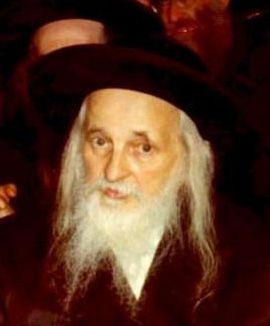
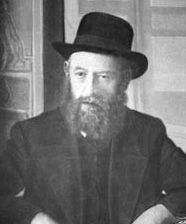
Rabbi Teitelbaum was not the only leading figure that felt this way. Rabbi Shalom Dovber Schneersohn (known as the “Rebbe Rashab”), the fifth Lubavitcher Rebbe, wrote the following in his famous anti-Zionist letter:
“To insure a permanent Redemption from our present exile, we must hope and wait for deliverance from the Almighty Himself, and not through the hands of one of flesh and blood. Only then will our Redemption be complete.”
Even though I am a proud Lubavitcher Chassid, I can still appreciate the wisdom of the Satmar Rebbe. Both Lubavitch and Satmar agree that the only salvation for the Jewish people is the coming of the Messiah. We may have different points of emphasis on how to actualize his coming. Satmar has focused on educating the world about the dangers of Zionism. Lubavitch has focused on helping other Jews connect with G-d and His Torah.
Unity is a central concept in Judaism. G-d is One, as we proclaim daily in the Shema Yisrael prayer. The Jewish people are one and are compared to a single functioning and living entity. G-d and the Jewish people are One in that our souls are derived from His essence. The unity between G-d and Jewish people can only occur when we behave as one. If there is baseless hatred and division among us, the bond with G-d and His people is severely damaged. One of the integral elements in bringing the Messiah is baseless love among the Jewish people.
When I moved to Monroe, besides practicing medicine, I also tried to integrate myself into the community. I started learning in the morning at Heichal Rosenberg, a huge room in the main synagogue with millions of dollars’ worth of Jewish books. Hundreds of people learned there in the morning. I used to arrive around 5 a.m. and would learn for a few hours.
Then I would pray and go to work. I had my small circle of close friends with whom I would sit and learn. This was my routine for many years.
One of my chavrusas (study partners) and closest friends is Rabbi Pinches Hersh Reich. Rabbi Reich is widely respected for his incredible knowledge in the Talmud and Jewish law. There is a secular saying that the genius of Einstein is not that he thought of the theory of relativity, but rather that he could teach a child “one plus one equals two.” Rabbi Reich spent years teaching and refining my skills in learning Talmud. He also became one of my closest confidants for my personal struggles. He helped me acclimate to the unique culture of Kiryas Joel by teaching me the nuances of Chassidic living. He is truly my yedid nefesh (a soul brother).
One of my other chavrusas was the famous Satmar artist, Joel Gluck. We learned deep mystical texts from the Rebbe Rashab. After learning together for a few months, Joel asked me for a dollar from the Lubavitcher Rebbe. Rabbi Menachem Mendel Schneerson used to greet thousands of people every Sunday and give out dollars[1] with a blessing, as they passed by the Rebbe. I told Joel that I only have one dollar for myself, but I would try to get him one. The next day, I came out of the Satmar mikveh in the big Satmar shul and saw my good friend, Levi Appel, sitting and fundraising for Hatzolah. I sat down next to him to help. One of my patients walked over to me and told me the following story: The day before, he had been in a store in New York City. He paid for his purchase and got back change. He noticed that one of the dollars had markings consistent with a Rebbe dollar. He thought that I would like to have it. I thanked him and took the dollar. I called Joel and told him that the Rebbe had just sent him a dollar.
These dollars were understood as being for the receiver to give to charity (tzedakah). Most would give the dollar(s) of charity from their own money, and save the actual “Rebbe dollar(s)” given to them, due to the precious quality of the dollar having been handed to them by the Rebbe. ↩︎
Another person I met in Kiryas Joel who also had an important influence over my spiritual development was Rabbi Berish Kaufman. I met Rabbi Kaufman when he was a patient in my medical practice. I became close with him and we discussed various mystical teachings. It turned out that Rabbi Kaufman was well versed in kabbalistic wisdom and he offered to learn privately with me. For several years we studied together some of the deepest teachings from the famous kabbalist, Rabbi Isaac Luria (1534–1572). This wisdom intuitively flowed through my soul and infused inspirational energy to all other aspects of my life.
One morning while I was learning in shul, someone yelled to call Hatzolah. I ran over and found a very confused young married man lying on the floor. He had fallen off his chair. I asked him what happened, and he said he was not sure. I had my fingers on his wrist checking his pulse while talking to him.
Suddenly, he became unresponsive and his pulse disappeared. I was still waiting for Hatzolah to arrive with a defibrillator. Without much option, I decided to perform a precordial-thump. Put simply, I hit his chest wall right above his heart, as hard as I could. This can generate a small electrical impulse in the heart. The patient suddenly regained a pulse and became conscious. He was taken to the hospital and he did well.
I really enjoyed learning the Torah in shul in the morning. It set the right tone for the day. One time, while learning, a young man came over and started to talk to me. He said that he wanted to thank me. I was not sure what he wanted to thank me for. He explained that he knows how busy I am, and that if I could make time to learn in the morning, what about himself? He felt guilty and resolved to do some Torah learning every morning. I was moved by this story and realized that sincerity for G-d is contagious.
I believe that one of the most significant effects that my arrival to Kiryas Joel had was on ahavas Yisrael (the love of a fellow Jew). When I was in residency a retiring orthopedic surgeon shared with me his secret to success. He called it the three “A”s: Ability, Attitude, and Availability. He explained that to be successful and effective, a physician must possess all three. For example, if a doctor is very able and has a good attitude but is not easily available then his effectiveness is diminished.
I took this advice to heart and integrated it into my practice of medicine. I tried to make myself available as much as possible and my home was usually open to help patients. Hatzolah would frequently bring me patients after hours, at night, and on Shabbos and Yom Tov. After more than a decade of this approach, the effect on the community was profound. I was a Lubavitcher doctor serving the Satmar community, who had become spiritually and socially integrated with that community. Kiryas Joel had become my home on many levels. Most people looked past our differences and focused on what we had in common. Acts of goodness and kindness had led to unity of Jewish hearts.
This unity became publicly evident during the inauguration of my Torah scroll. A Jew is commanded to write his own Torah scroll. If he does not know how then he should pay someone to doitforhim. Ipaida sofer (a trained scribe) in the Land of Israel to write it for me. When it was finished, I brought the Torah scroll back home with me. It is customary to make a celebration like a wedding in honor of the new Torah scroll. I decided that the best place for me to make this celebration was in the center of Kiryas Joel. Thousands of people participated in the event. Words are inadequate to describe the beauty and unity that was demonstrated on that day. If our Holy Temple was destroyed due to baseless hatred, it will surely be rebuilt with baseless love.
